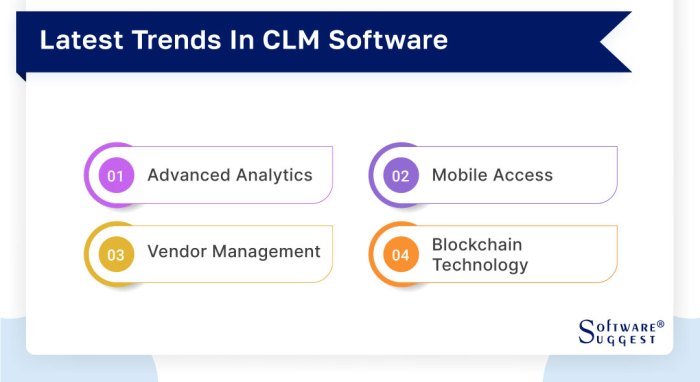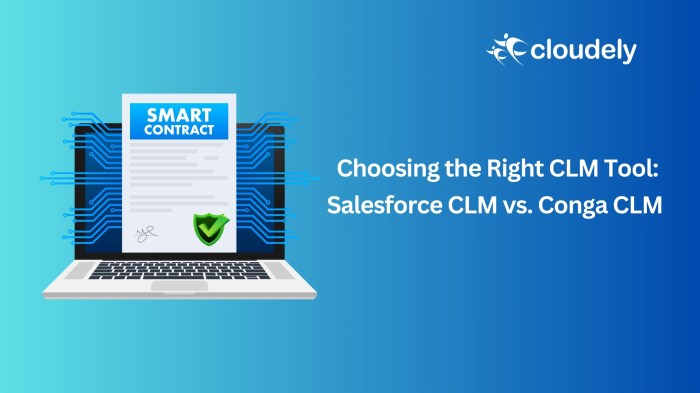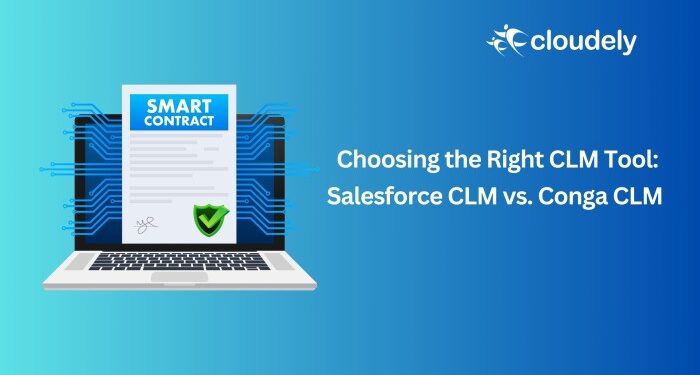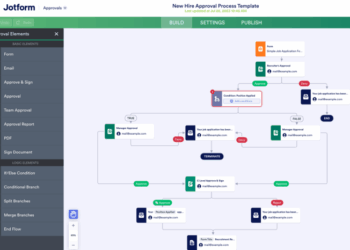Embarking on the journey of Choosing the Right CLM Platform for Contract Transparency leads us into a realm where efficiency meets innovation. Let's delve into the intricate world of contract management and discover the key to unlocking transparency.
Overview of CLM Platforms
Contract Lifecycle Management (CLM) platforms are software solutions designed to streamline and automate the process of managing contracts throughout their lifecycle. These platforms help organizations create, store, track, and analyze contracts, ensuring compliance and efficiency in contract management.
Popular CLM Platforms
- Ariba: A cloud-based CLM platform that offers features for contract creation, negotiation, and compliance management.
- Coupa: Known for its user-friendly interface and integration capabilities with other procurement systems.
- Icertis: A leading CLM platform that focuses on contract intelligence and analytics for improved decision-making.
Importance of Transparency in Contracts
Transparency in contracts is crucial for building trust between parties and ensuring compliance with legal and ethical standards. CLM platforms facilitate transparency by providing a centralized repository for all contract-related information, allowing stakeholders to access and review contracts easily.
Factors to Consider When Choosing a CLM Platform

When selecting a Contract Lifecycle Management (CLM) platform to ensure contract transparency, there are several key factors to consider. These factors include the features offered, pricing models, and integration capabilities with other software systems.
Key Features for Ensuring Contract Transparency
- Centralized Repository: Look for a CLM platform that provides a centralized repository for storing all contracts, making it easier to access and review them.
- Version Control: Ensure the platform offers version control capabilities to track changes made to contracts over time.
- Automated Alerts: Choose a platform that sends automated alerts for upcoming contract renewals, deadlines, or important milestones.
- Search Functionality: Opt for a platform with robust search functionality to quickly locate specific clauses or terms within contracts.
- Reporting and Analytics: Consider a platform that offers reporting and analytics tools to gain insights into contract performance and compliance.
Comparison of Pricing Models
- Subscription-Based: Some CLM platforms offer subscription-based pricing models, where users pay a recurring fee for access to the software.
- Perpetual License: Others may offer perpetual licenses, allowing users to make a one-time payment for ongoing use of the platform.
- Usage-Based: Some platforms may charge based on the number of contracts managed or the volume of usage.
- Custom Pricing: Consider platforms that offer custom pricing tailored to your organization's specific needs and requirements.
Integration Capabilities with Other Software Systems
- CRM Integration: Look for CLM platforms that integrate seamlessly with Customer Relationship Management (CRM) systems to streamline contract processes.
- ERP Integration: Consider platforms that can integrate with Enterprise Resource Planning (ERP) systems for better visibility into financial data and compliance.
- API Capabilities: Choose a platform with robust Application Programming Interface (API) capabilities for easy integration with other software tools and systems.
- Third-Party App Integration: Evaluate platforms that allow integration with third-party applications to enhance contract management capabilities.
Customization and Scalability
Customization options play a crucial role in a CLM platform as they allow organizations to tailor the system to meet their specific contract transparency needs. By customizing features, fields, and workflows, companies can ensure that the platform aligns with their unique requirements, increasing efficiency and accuracy in contract management.
Importance of Customization
- Customized templates: Organizations can create contract templates that reflect their industry standards, terms, and legal requirements, ensuring consistency across all contracts.
- Configurable workflows: Customizing workflows based on the organization's contract approval process streamlines operations and reduces delays in contract execution.
- User permissions: Setting up customized user roles and permissions ensures that sensitive contract information is only accessible to authorized personnel, enhancing security and compliance.
Scalability in CLM Platforms
- Adapting to growth: Scalability allows CLM platforms to accommodate the increasing volume of contracts and users as organizations expand, ensuring that the system remains efficient and effective.
- Integration capabilities: Scalable CLM platforms can integrate with other business systems, such as CRM or ERP software, to support seamless data flow and collaboration across departments.
- Cloud-based solutions: Scalable cloud-based CLM platforms offer flexibility in storage capacity and software updates, enabling organizations to scale their contract management capabilities as needed.
Impact on Contract Transparency
- Improved visibility: Customization and scalability enhance data visibility and reporting capabilities, allowing organizations to track contract performance, compliance, and risks more effectively.
- Enhanced efficiency: Tailoring the CLM platform to specific needs and scaling it as the organization grows improves operational efficiency, reducing manual errors and delays in contract processing.
- Better decision-making: Customized features and scalable solutions provide organizations with actionable insights and analytics, empowering them to make informed decisions and optimize contract strategies for transparency and compliance.
User Interface and Experience

When it comes to Contract Lifecycle Management (CLM) platforms, the user interface plays a crucial role in ensuring contract transparency. A well-designed interface can enhance user experience, making it easier for users to navigate through contracts and access relevant information efficiently.
Designing an Intuitive User Interface
Creating an intuitive user interface is key to improving contract visibility within a CLM platform. Here are some tips to consider:
- Organize information logically: Arrange contract data in a clear and structured manner to help users find what they need quickly.
- Use visual cues: Incorporate visual elements such as color coding, icons, and charts to highlight important contract details.
- Implement search functionality: Include a robust search feature that allows users to easily locate specific contracts or clauses within the platform.
- Personalize user experience: Provide customization options that enable users to tailor the interface to their preferences, making it more user-friendly.
User Training and Support
Offering adequate user training and support is essential for maximizing transparency through the CLM platform. Here's how user training and support can contribute to a better user experience:
- Provide comprehensive training: Offer training sessions to familiarize users with the platform's features and functionalities to ensure they can navigate it effectively.
- Offer ongoing support: Have a dedicated support team available to address user queries and provide assistance whenever needed.
- Create user documentation: Develop user guides and manuals that users can refer to for step-by-step instructions on using the CLM platform.
- Encourage feedback: Solicit feedback from users to continuously improve the user interface and overall user experience based on their input.
Final Thoughts
As we conclude our exploration into Choosing the Right CLM Platform for Contract Transparency, one thing becomes clear - transparency is not just a goal, but a necessity in the realm of contracts. By selecting the right platform, organizations can pave the way for a future where clarity and efficiency go hand in hand.
FAQ Corner
How important is contract transparency in today's business environment?
Contract transparency is crucial as it fosters trust, reduces risks, and enhances compliance within organizations. It also promotes accountability and helps in resolving disputes effectively.
What pricing models are commonly offered by CLM platforms?
CLM platforms often offer subscription-based pricing, pay-per-use models, and enterprise licenses tailored to the needs of different organizations.
How does user training impact transparency through a CLM platform?
User training plays a vital role in maximizing transparency as it ensures that employees understand how to effectively use the platform, leading to better compliance and visibility into contracts.













